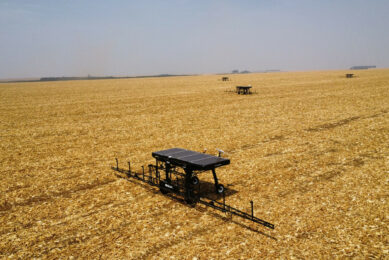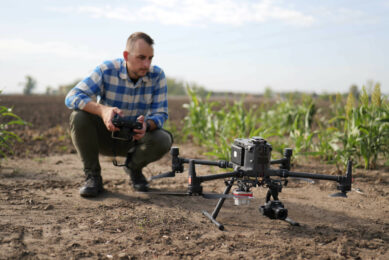Automated drones scare birds off agricultural fields

A Washington State University research team has developed a system where cameras could spot pest birds in vineyards or orchards and launch drones to drive off the birds, then return to watch for the next invading flock.
For the study, the team ran two separate tests: detecting birds and deploying drones automatically. Over a few years, they developed a camera system and algorithm that would find birds and count them as they flew in and out of fields.
The team customized very small drones and deployed them for flight tests on small plots with simulated birds.
Hurdles
It will be several years before this particular technology would be commercially available for growers because there are still several hurdles, including making sure it works at scale, complies with federal drone regulations, and continues to deter birds even if drones are commonly flying around.
Also read: Laser reduces bird damage in crops by up to 90%
This automation research is the third in a series of three studies by Washington State University (WSU) concerning drones and bird pests. The first showed that manually operated drones, doing random flights, successfully drive off or keep birds away from vineyards. They found that drones reduced bird counts four-fold.
50% reduction in damaged fruits
The second project showed the impact driving off the birds can have on crop yield. The researchers followed up on the fields where they manually drove birds off. Those fields had around 50% reduction in damaged fruits.
We could make drones look like predators, or have reflective propellers that are really shiny
Manoj Karkee, associate professor in WSU’s Department of Biological Systems Engineering and the study’s corresponding author, plans to meet with growers, technology companies, and other stakeholders to start next steps on working toward a commercially available automated drone system.
“We could make drones look like predators, or have reflective propellers that are really shiny,” he said. “All of these working together would likely keep birds away from those vineyards and fields. We need to research that over multiple years to make sure.”
Also read: Protecting farmland bird nests with drones and AI
Join 17,000+ subscribers
Subscribe to our newsletter to stay updated about all the need-to-know content in the agricultural sector, two times a week.



